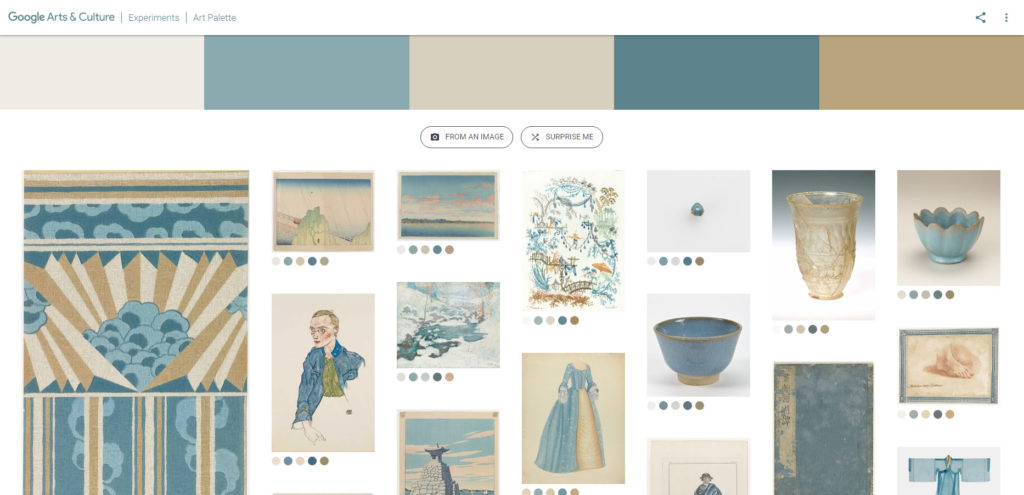Art World
What’s Your Favorite Color? With Art Palette, Google Hopes to Repeat the Success of Its Viral Face-Matching App
Now you can discover new works of art you might enjoy if you like, say, magenta.

Now you can discover new works of art you might enjoy if you like, say, magenta.

Earlier this year, Google’s Arts and Culture app became a social media mega-trend thanks to a new feature that matched user’s selfies with faces from famous works of art. Now the tech giant has announced a follow-up feature: Art Palette.
Art Palette asks users to pick a series of colors, then it matches those colors with a selection of artworks that have the same palette, sourced from 1,500 cultural institutions around the world. For instance, search the color values of royal blue, straw yellow, and charcoal black, and you’ll likely get Vincent van Gogh’s The Starry Night. You can also upload an image of your own and lets the app amalgamate the pixel information into a handful of distinct colors.
The feature uses computer vision algorithms to quickly determine the hex color codes of constituent pixels, then averages them out and calculates five new representative codes. The product of seven years of research, Art Palette complements the app’s many other educational and interactive features, such as Art Camera, which allows viewers to examine famous paintings in high-resolution, inch-by-inch detail.
Alongside Art Palette, the company also announced two other interactive “experiments” for its Arts and Culture arm this month. In collaboration with the Museum of Modern Art, the company created a tool for identifying individual artworks in 30,000 recently released installation photos of the museum’s exhibitions dating back to 1929.
Available on the MoMA website, the tool allows users to interact with the images and creates connections between the museum’s vast digital collection and one the 4,811 exhibitions online. If you were able to stumble upon this image of MoMA’s 1938 exhibition “Three Centuries of American Art,” for example, you could identify the painting in middle as a 1929 self-portrait by John Kane.
Finally, LIFE Tags is a digital archive of the four million photos shot for LIFE Magazine from 1936 to 1972. Using AI technology, the company was able to scan, analyze, and label each of these photographs, making them searchable by subject, year, location, and other criteria. Users are invited to explore these artifacts, only a scant five percent of which ever made it into publication.